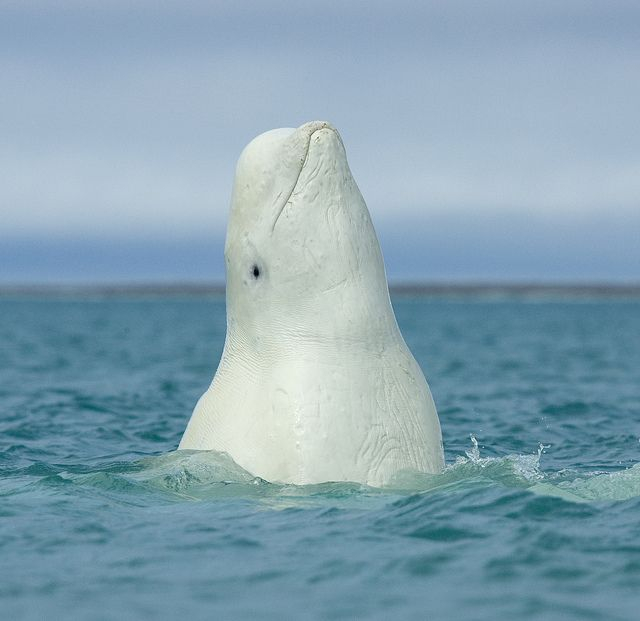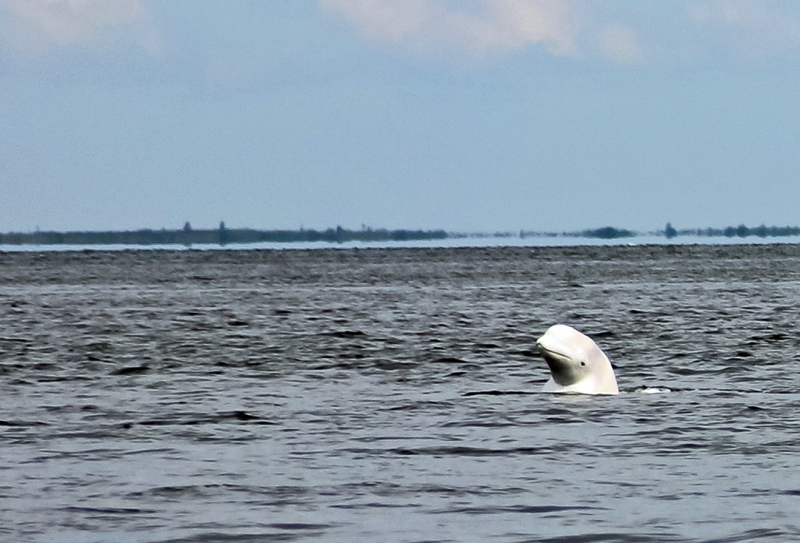Belugas’ necks are unusually flexible
Although certain species of whales and dolphins have as many as seven neck vertebrae fused, stiff necks are a typical trait in these animals. However, the reason for this adaptation is still unclear. Among other potential benefits, it could make swimming more stable, but it also prevents animals from turning their heads independently of the rest of their bodies. Belugas, on the other hand, are among the rare cetaceans having completely unfused neck vertebrae allowing the animal to shift its head laterally without rotating its body.
One of the interesting facts about Beluga Waves is that have as many as seven neck vertebrae unfused and their necks are narrower than other whales making their necks unusually flexible. Because of the greater range of head movement made possible by this, belugas can nod and glance to the left and right with considerable ease. This allows the head to move more freely and has a better field of vision, which helps the animal catch prey and avoid predators, advantageous for communicating, or even simply general mobility in cold or shallow water.













